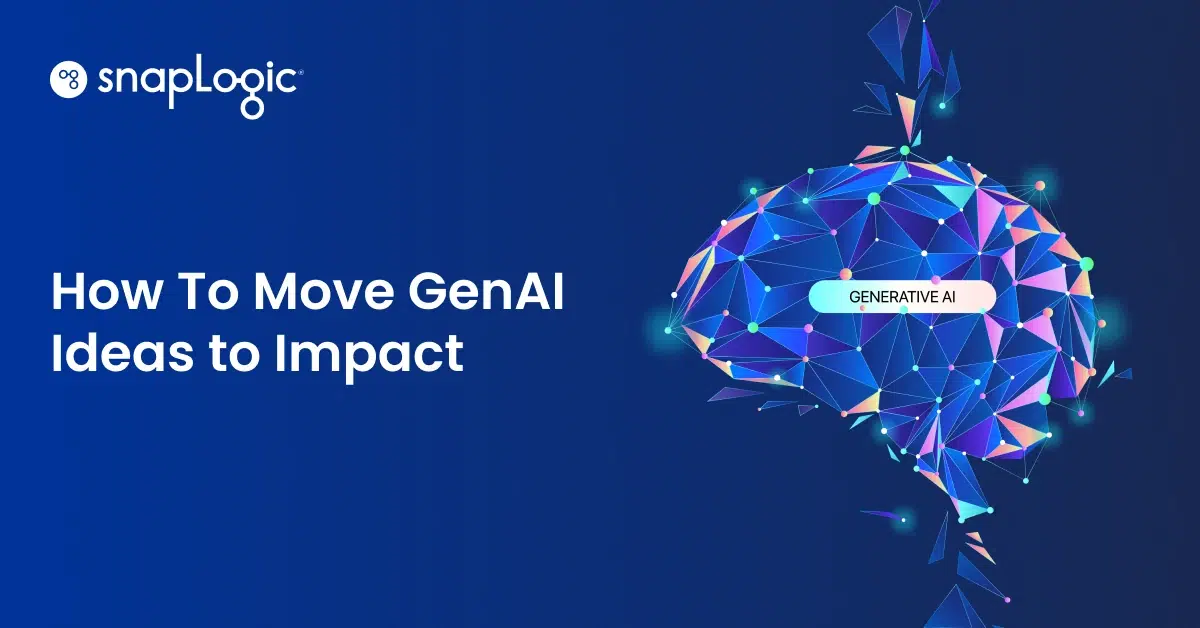As a software integration professional, you’re likely no stranger to the complexities and challenges that come with the territory. You’re tasked with connecting various applications, data sources, and legacy systems, across on-prem and cloud environments, all while ensuring that data flows seamlessly and securely. This requires constant adaptation, innovation, and problem-solving skills. But what happens when you are hit with a creative block preventing you from getting started?
Enter SnapGPT, a Generative AI-based integration solution that can help you overcome “writer’s block” and unlock new creative solutions for your software integration projects.
What is Generative Integration?
Generative Integration is an emerging software integration solution category that leverages Generative AI solutions like ChatGPT from OpenAI or other Large Language Models (LLMs) to allow users to turn intentions into integrations faster.
Watch our on-demand webinar, “Generative AI: Emerging Use Cases for Integration” to explore Generative Integration even further.
How can Generative AI help software integration professionals?
There are several ways that generative AI solutions like the recently launched SnapGPT solution from SnapLogic can assist software integration professionals in overcoming creative challenges:
1. Create 1st draft of integration workflow or pipeline
When you’re stuck on a particular problem or looking for fresh ideas, generative AI can help. By entering a prompt related to your challenge, the AI model can create a first draft of a pipeline to help you overcome the blank slate problem.
2. Suggest templates or patterns from a catalog
Most integration vendors provide templates, also referred to as patterns or recipes, for various integration use cases. Some vendors offer hundreds of high-quality templates, while others source tens of thousands of templates from the community without any curation. It can be pretty unwieldy to find the correct pattern to get started with. Generative AI can search through the catalog and give you relevant recommendations to get to a flying start.
3. Recommend connectors or Snaps for a given use case
Generative AI can analyze your use case and suggest the most appropriate connectors or snaps to use. By understanding your requirements and the capabilities of available components, the AI can help you make informed decisions on the best building blocks for your integration project.
4. Provide help on how to create integrations and use available building blocks
Generative AI can also provide on-the-fly guidance and suggestions on how to create integrations using the available building blocks. This can be particularly helpful for professionals who are new to a platform or unfamiliar with the specific components being used. It can also help enterprises empower citizen integrators to create their own solutions and help IT clear their backlog.
Find out more about Generative AI and SnapGPT
These are just some of the ways Generative Integration can get you started and help you turn intentions into integrations faster. To learn more about the emerging Generative Integration, be sure to watch our on-demand webinar, “Generative AI: Emerging Use Cases for Integration,” featuring AI thought leader Kirk Borne and SnapLogic CTO Jeremiah Stone. Don’t miss this opportunity to explore the cutting edge of software integration technology and discover how generative AI can help you tackle even the most complex integration challenges.











